This word is used to describe the set of all inputs for a function.
What is the domain?
What is No, not a function? It does not pass the vertical line test.
f(-3) if f(x) = 2x +1
What it -5 ?
Find the DOMAIN:
{(-2, 4), (3, 2), (2, 10)}
What is {-2, 3, 2}?
f(n)=2n+1
g(n)=3n
Find f(n)+g(n)
5n+1
This word is used to describe the set of all outputs of a function.
What is the range?
What is Yes?
Let f(x) = x2 + x + 1; find f(-5).
What is 21?
Find RANGE:
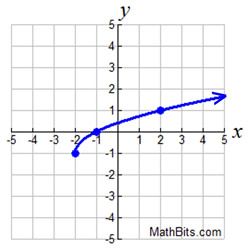
[-1, infinity)

What is the RANGE of the situation?
{0,20,40,60,80,100,120}
What is the answer to the following function? f(x)=-x2
x=-5
What is 25?
The mapping diagram shows a function or not.
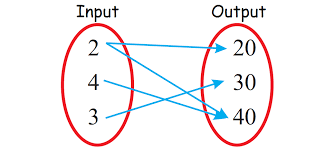
What is No, not a function?
Based on the graph of the function, what is f(4)?
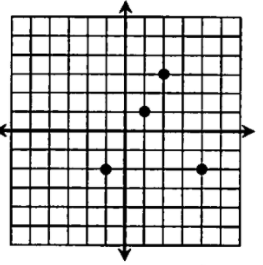
f(4) = -2
Find DOMAIN:

all real numbers
(neg infinity, pos infinity)
f(x)=x^2+1
g(x)=2x-5
Find
f(x)-g(x)
x^2-2x+6
How do you determine if a GRAPH is a function or not?
What is the Vertical Line Test?
Does the following table represent a function?
x y
1 2
2 5
6 2
2 9
5 1
What is No, because the domain of 2 has two different ranges 5 and 9
What is P(-3)
P(x)=x2 + 5x + 2
P(-3)=-4
Find the DOMAIN:
-5<=x<=8 or [-5,8]
1, 4, 7, 10...
What is the 21st term in the sequence?
61
This word describes any set of ordered pairs where each x-value is paired with one y-value.
What is a Function?
Is this a function and why?
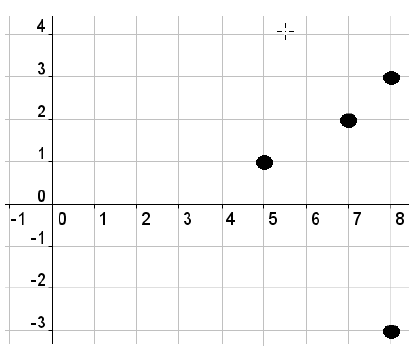
What is no, because the domain of 8 repeats?
Find f(4) =
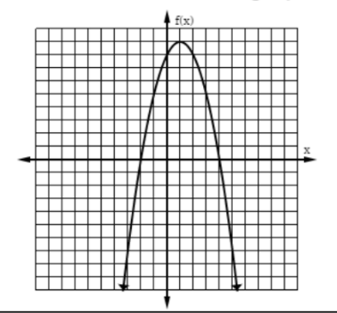
0
Find the RANGE:
-3<=y<=2 or [-3, 2]
3,-6, -15, -24,....
What is the 11th term in this sequence?
-87